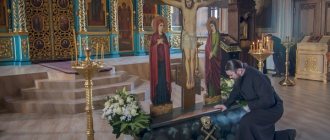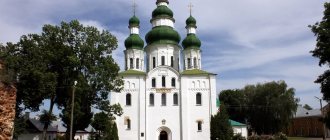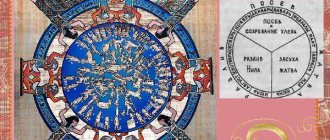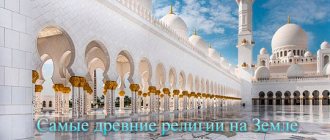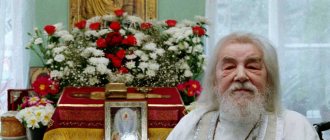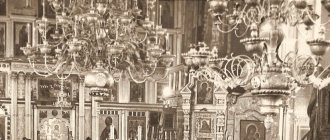In natural habitat
Continuation of the story about how to ask for an overnight stay in a monastery or church with minimal losses. The previous (initial) issue talked about some of the philosophical aspects of this topic, some terms (and their explanations) and what increases the chances of providing overnight accommodation in Christian institutions.
There are also reports on the possibility of finding overnight accommodation in Muslim institutions (primarily mosques) and in Buddhist monasteries (especially for temples in Southeast Asia).
CONTENT:
- Who lives in an Orthodox monastery.
- Charter of the monastery.
- Who and how in the monastery gives blessings for lodging/overnight.
- Evening/morning prayers (obligatory and not so obligatory). Procession.
Who lives in an Orthodox monastery
(although I assume that in Catholic monasteries the picture is similar). For those who are not yet in the know, let us inform you that monasteries (Christian and also Buddhist) arose with the purpose that people who went to them could retire and devote themselves more to prayers and meditation. Well, all people are different, and everyone has their own outlook on life. Some people believe that you need to have a full time in life, while others, on the contrary, believe that you need to devote more time to more spiritual values.
In Russian Orthodox monasteries there is an established hierarchy of people living there (in Orthodox/Orthodox monasteries in other countries the hierarchy is the same, or with minimal differences), which is described in a few paragraphs below.
This is how the door to one of the churches in Mestia (the capital of the aforementioned Upper Svaneti) is closed “on a cross”. This is quite symbolic.
- Abbot of the monastery. He is the abbot... He is the main priest of the monastery. The difference between him and the priest of an ordinary city/rural church is that the first one takes all sorts of monastic vows , of which perhaps the main one is the vow of celibacy (and even more so, no sex at all), and the second one can get married and spread his genes (but only through a legal spouse). Well, the abbot of the monastery is, as it were, the director of this institution (and the owner of almost any operating Orthodox monastery in Russia is the Russian Orthodox Church, in other countries it is an analogue of the Russian Orthodox Church).
The abbot gives instructions to all other residents of the monastery, blessing them on what they should do and what they should not do (including junior priests). Director, in a word. Almost all of these directors went from a novice laborer to a rector. Perhaps in the early 90s, when the religious and monastic movement was hastily revived in the post-Soviet space, there was not much time to wait for all candidates to pass a normal time examination. And many probably missed the fate of the laborer stage, or for some it was too short.
Here is a small monastery in the village of Ushguli at an altitude of 2200 meters, located in Upper Svaneti in Georgia.
- Other priests of the monastery. In rank lower than the abbot, but higher than the monks, they can lead the service, and sometimes give instructions on what to do to whom or who should be allowed to spend the night or in the refectory for lunch. All these acts are performed with the blessing of the abbot. A monastic (that is, monastic) priest is also called a hieromonk (that is, a senior monk), as far as I know.
Also, such monastic priests can be called “black clergy” (for they are dressed in black robes), and lay priests can be called “white clergy.”
- Monks. Let's put it this way, the middle class of the monastery's inhabitants. They are blessed for work on a par with novices and laborers, but usually for cleaner work and more responsible ones. For example - bell ringer, librarian, driver, kitchen worker. Hieromonks are monks of higher rank. They can also be priests in this monastery (but below the abbot). There is another interesting category of Orthodox monks - the schema monk. This is a monk who went into seclusion or took very strict vows (in their slang, he took the schema).
In the church of the Samtavro Monastery in the very interesting Georgian city of Mtskheta... Nuns Nuns pray with a low bow, as in Muslim prayer.
- Novices. These are those who have already risen from the level of laborer and are going to become monks (and then, you see, they will rise to the highest ranks - after all, as they say, “a bad novice is the one who does not want to be an abbot”)... Many of them (or even the majority) have ascended to this level from laborers.
- Workers. The lowest caste category of monastery residents. According to my observations, among them there are at least half of those who came to the monastery because they have nowhere else to go, and at the same time do not want to completely become homeless... In some monasteries there is an absolute majority of such former homeless people, in some - less than half.
Spaso-Yakovlevsky Monastery in the town of Rostov Veliky, Yaroslavl region. And the one-story “barracks” on the right is a dormitory for “workers” (many of whom are former alcoholics and other “low-ranking” individuals).
But there are also such laborers who became such with the goal of later climbing the spiritual career ladder to a novice, and then to a monk. That is, they want to devote their life (or part of it) to God and prayers addressed to Him. Or at least try to do it (since only God knows how it will turn out). Some arrive at the monastery simply to “work for the glory of God” for a while - for a week, for a month, and they are also placed in cell rooms with workers. Travelers are usually also accommodated in the cells of the workers.
As a rule, workers in the monastery are not given money , but it happens that, for example, they can give money for a ticket to somewhere (for some wander from one monastery to another monastery, and sometimes thousands of kilometers).
Women, as a rule (in about 99% of cases), do not live in the monastery. Sometimes some workers (cooks) come during the day, but they are not allowed to stay at night.
This is the space between two carriages, which are a dormitory for the “workers” of a monastery in the town of Rostov Veliky, Yaroslavl region.
This former carriage now serves as a dormitory for the “workers” of the monastery in the town of Rostov the Great. It's hard to believe, but both cars are packed into the one-story barracks shown in the next photo.
Inside the barracks are packed two dormitory cars, shown in the two previous frames. And one of the “workers” had just left the barracks.
In nunneries
- They have the same system, but besides the priests. For in Orthodoxy a woman cannot be a priest. In the churches of convents, services are conducted by lay priests ordered from the city or the nearest settlement. That’s what they sometimes say: “we order a priest from the city.” The order is apparently paid for somehow. I didn't recognize it.
- The convent an abbess . She is the abbot. There are also hieromonks, nuns (not nuns!!!), novices and laborers.
- Also, at some women's monasteries (more often outside than inside them) men live who help the monastery in some way - usually with physical strength. As a rule, such men do not smoke or drink (otherwise they would hardly be kept). Some are paid well for their work (especially if the monastery is financially rich), some are paid a little - depending on the monastery and the situation. Sometimes some men work in the nunnery during the day (including those hired for normal wages), but at night they are almost always expelled.
Franciscan Catholic monastery in the village of Kraljeva Sutjeska (Royal Gorge) in the country of Bosnia and Herzegovina. There is an interesting museum in the same monastery.
Monastery Charter
A monastery usually has its own specific charter, which in one way or another differs from the charters of other monasteries. Somewhere there is a very strict regime (there have been several monasteries where even local villagers were not allowed to pray in the monastery church, not to mention some travelers eager to look at the ancient architecture of this regime institution). And somewhere it happens the other way around - life is comfortable for everyone living in the institution, especially for the workers, who in the absolute majority come to the monastery NOT to “work-for-the-glory-of-God-and-pray,” but because they simply do not have their own housing, that is, homeless people.
Of course, almost all such workers have so-called “bad habits” - cigarettes, alcohol, gambling, girls (although usually not all at once), which they can wean off in the monastery, but this is very rarely 100% successful. But if a person believes in God, then it will be easier to get rid of these habits. However, I have never seen (at least I don’t remember this) even a hint of some sexual or homosexual relationships in Orthodox monasteries (although, for example, this has happened more than once in Buddhist monasteries). But it happened among church parishioners.
In almost no Orthodox monastery (and we are talking about them in this paragraph) it is officially forbidden to smoke on the territory of the monastery, but in about half of the cases the workers living there smoke somewhere behind the toilet, or in another secluded corner, where they will not be caught by the eye of the overseer of the abbot. or some senior monk. There are also special “smoking rooms”, almost official ones - either outside the walls of the monastery, or somewhere in the far corner or near the toilet.
And here are the “rules of residence” in the “pilgrim’s house” of the monastery in the town of Kirillov, Vologda region.
I remember how in one monastery in 2004 (the year of my first pilgrimage), immediately after the morning universal obligatory prayer (more about such obligatory prayers will be discussed below in the section “(semi) obligatory evening/morning prayers”) the abbot said to some of the workers - “If I smell tobacco again, I’ll drive you out of the monastery.” I could not check the further development of events, for that morning I left this monastery with God's help.
I don’t know whether they often drink alcohol in monasteries, but somehow I don’t remember such cases.
A room for pilgrims and “workers” of a monastery in the town of Kirillov. There are icons on the wall in the room. The clothes are drying on the line. A fairly good hostel for the monastery guests.
If there are quite a lot of monks and novices in the monastery, then it happens that during common meals one of them stands in front of those eating and reads some pages from the Bible (possibly some other church books), so that along with the food The Grace of God also came. When everyone has eaten, this reader will sit down and catch up with his brothers in satisfying their hunger.
Gelati Monastery 6-8 centuries near Kutaisi in Georgia. One of the most famous and visited there.
Work in the monastery
Workers work 3-6 hours a day (5-6 days a week, Sunday is always a day off) in the monastery itself or sometimes at work where the abbot or his right hand sends them. For this they are given shelter, food, a shower, and occasionally some money (mainly to especially honored and pious workers). And of course, that peace of mind is given for which (as is implied) the workers came here to the monastery. Those at a higher level (monks, novices) probably have more benefits and other dividends. For length of service, so to speak.
Sometimes the abbot or monks of this monastery may ask a pilgrim staying with them to help them with some housework. It happens that they may ask (directly or in a hint) “If you are staying with us for a night or two or three, then you should help us with something.” Sometimes this means that if the pilgrim does not agree to work, then on the second night they will not really want to see him (and even more so on the third). But everything depends on the monastery and the abbot. Situations are different.
If I more or less liked the monastery and its inhabitants (for example, because you can admit to them that you are “NON-Orthodox” and they will not reproach you for it), then I could agree to work. But usually, the opposite happened (by the way, in Georgia there were often quite loyal priests, but Georgia is a separate story). Well, everything is God’s will.
Noravank Monastery of the 13th century in the province of Vayots Dzor in Armenia... However, in this country it is very bad with monks and priests. There are few of them per capita, and many ancient churches function as if half-heartedly, that is, the priest is usually not visible there, and to catch a service in an Armenian church is a great success... And this is a big contrast in comparison with neighboring Georgia, where monks so many.
Blessing for staying/overnight
In the vast majority of monasteries, the blessing for lodging/staying for the night is given only by the abbot of the monastery (or the main priest of the church where you have come to in search of lodging for the night). If a pilgrim is suddenly brought to stay for the night, and the abbot has left somewhere (well, the commander also has his own affairs), then usually they will NOT be allowed to stay without his knowledge.
In the event of the bishop’s departure, three main options are possible (well, besides simply saying “We don’t accept overnight stays”):
- Or they can call the boss and report to him about the arrival of the wanderer (if the abbot picks up the phone, he usually gives the go-ahead, sometimes he can ask a question like “Does the traveler have a cross?”) ... But they don’t call that often. And in half the cases they disturb the abbot at the insistent (and at the same time modest) request of the alien.
- Or there is someone else in the monastery who has the right to give a blessing for the stay (such a deputy head may be called a “dean”).
- Or they will simply say “the abbot is away, and we do not dare resolve this issue without his knowledge.”
- Or some other option is possible, but I have come across exactly these three options described above... Usually the abbot is in the monastery. In women's monasteries everything is about the same.
Memo for guests of the monastery in the town of Kirillov, Vologda region. The words are apparently taken from the Bible.
In women's monasteries, a man is usually not allowed to spend the night, even if he is a thrice-merited pilgrim. An exception, as a rule, is in cases where the monastery has premises for accommodating pilgrims, or there is some free space away from the nuns’ chambers. In most cases, I spent the night in nunneries in 2004-05 - during my first two years of pilgrimages and related travel. I have a feeling from the last 5-6 years that now it has become stricter with overnight stays in both women’s and men’s monasteries.
It’s the same in a monastery - if there are separate rooms for pilgrims , then a woman can be accommodated. If not, then the chances for a wandering woman will be very slim. Some especially holy and visited monasteries have large apartments for these purposes - for 100 people or more.
- Of course, the charter of a monastery or church is not always and not everywhere observed 100%. Sometimes in a monastery (or in a city church) you can have lunch just by knocking on the door of the refectory with the words “sorry, we are not local, we have been on the road for a long time, would you please feed us who are swollen and tired.” But as a rule, even this action requires the blessing of a priest or someone else who has the right to issue permission.
In the huge refectory of the ancient Alaverdi monastery in Georgia. This is during the annual Alaverdoba holiday (in honor of this monastery)... On the tables there are both treats from the pilgrims themselves and gifts from the monastery.
In rural churches, feeding is easier (if such conditions exist). There, sometimes after walking around the icons and some simple gestures towards these shrines, a worker in the church (for example, a saleswoman of candles and various applications) may herself offer to drink tea or have lunch in their refectory - this has happened to me more than once. But!!! They will hardly offer you this unless they suspect you to be an Orthodox pilgrim, since the attitude towards brothers in mind is much warmer than towards dissidents.
But they usually don’t let you spend the night without the blessing of the rector (or the priest of the church), kiss the pilgrim at least 315 icons and make 820 body movements in the Orthodox style... But even here there are some nuances, which are additionally written about in the paragraph “overnight in churches” (Orthodox, Catholic , Baptist, etc.).
On the dome of this church in southern Georgia there is an original cross, in which a circle is inscribed (Buddhists have a symbol of the wheel of rebirth)... Unique. However, the circle, as they told me near the church, is the steering wheel, and the church was built by sailors exiled here in tsarist times.
(Semi) obligatory morning/evening prayers
Not always, but usually in Orthodox monasteries there are morning (at 6-6.30) and/or evening prayers (usually after dinner). They can also be called “evening/morning rules” ... This aspect applies only to Orthodox monasteries (perhaps there are also Catholic monasteries, but I visited them only 2-3 times, unlike Catholic churches).
I got the impression that there are almost always morning prayers/"rules", but not always evening prayers - probably only in more or less high-security institutions. These prayers/"rules" are not the usual services that take place in churches. These are prayers for monks and novices and workers living there. They also take place in the church.
For a person who is not accustomed to such torment of his spirit, it will not be so easy to come to terms with the fact that such a prayer must be defended, because to many it may seem like the meaninglessness of this action. But usually such prayers are not as long as church services - 30-60 minutes , and lay people are not invited there (although lay people can come to such prayers if the gates of the monastery are still or already open).
With such prayers/rules, everyone prays themselves , and not in time with the sounds and movements of the priest leading the service (for he does not walk with a censer, does not shake it in front of the gathered parishioners who are not invited to such actions). And also, everyone approaches the icons, kisses them and performs other traditional body movements (well, of course, if he knows what to do, but if he doesn’t know, then he will look at the brothers around him and figure it out).
In many churches there are the relics of some holy people (for Christians, saints), who once prayed very well, and therefore were revered by other Christians and deserved that their bones (or other parts of the body) would serve as an object of worship. A Christian must approach this object and kiss it (or touch it with his hands and forehead)... In this case, there are the relics of various saints, and the inscriptions for the relics whose relics they are.
Procession
After evening/morning prayer in some monasteries (not all!!!) there is a procession of the cross, when everyone present at this prayer takes an icon (chooses it himself - usually from the row from which everyone takes it), and then all participants move to a fresh the air cut circles around the same church and around other monastery buildings. Such passages occur not only on the territory of monasteries and churches, but even along the streets of the city.
At the head of the entire procession are the elders (priests of the monastery) and carry crosses. They can approach some special places in the monastery (for example, the graves of previous abbots), stop there, make interesting movements, and then continue the procession. Usually there are either one or three circles.
If there is some special holiday on this day (or its eve), then probably more circles can be cut. In general, it is quite interesting, and taking part in such a festival once will probably be very interesting for you. Or maybe you will be so saturated with the goodness of this action that you will eventually become a normal Orthodox Christian. Amen.
One day I caught a religious procession through the streets of the town of Telavi in Georgia. They brought some holy icon to the city. And they walked with her through the streets. We stopped near the sovereign's establishments, from where people came out and worshiped the icon.
Is it obligatory to attend evening/morning prayer and service?
Here, too, it depends on the severity of the institution. You can carefully ask the workers about the obligation, and perhaps they will tell you. But they may not say much, but get off with the phrases “well, as you know, it’s up to you to decide.”
Some workers themselves shy away from going to such prayers (and to services too, which similarly happen every evening and every morning, sometimes there are one or the other, but usually every monastery has at least one service a day). They may sleep through the morning prayer, or come only for part of the service (then go out to smoke in a secluded place, take a walk somewhere and come back to pray). From such actions it is usually clear why this worker went to the monastery.
If in Russian Orthodox churches it is not customary to sit during services, then in Orthodox churches in the Balkans this is quite acceptable and almost all the churches there have rows of similar benches installed, a kind of Balkan style.
If you want to stay NOT just one night, but longer , then it is better to attend such prayers and services so that the locals understand that you are not just a rogue, but truly a pilgrim. At least stand for 5-10 minutes. And so that time is not wasted, do not stand like a statue, but do approximately the same exercises as the people around you do. Yes, and kiss the icons. It’s nice for the monasteries, and it won’t hurt you. And most likely it will arrive.
Well, once you try it, perhaps you will like it, and maybe you will become a real Orthodox Christian. And then download a mobile application in the form of an icon , and in your future mobile life it will protect you and save your strength... Amen.
- By the way, travelers are recommended to download the application of St. Nicholas the Wonderworker , images of which are in almost every Orthodox church. Nikolai not only helps travelers, but also heals them from illnesses.
The small monastery of Khor Virap in Armenia.
Kiss the priest's hand
Often, during the service/prayer (usually at the end), you need to kiss the priest’s hand, when everyone present in the church goes to the final walk around the main icons. And so, after putting his lips to the shrines, it is the turn of the priest’s hand holding the cross. As far as I understand, you need to hit the hand, and not the cross (well, where all the parishioners were kissing, that’s where I was aiming). I don’t know what sanctions will be applied to those who miss.
Perhaps for the first time it will be difficult for you to kiss the hand of some uncle (even a priest), but after the first try you will certainly understand/feel that the goodness that has descended on you from this contact overshadows the fear and embarrassment experienced before this act. They will not offer to kiss or wash your feet. This is for a special few only.
Two ancient churches (and a little to the right in the distance - a fortress on a small rock) in the village of Surami in Georgia (on the way from Gori to Kutaisi).
- In general, at the beginning of my “pilgrimage” career (in 2005), I had the opportunity to visit Baku, the capital of Azerbaijan. There I went to ask for an overnight stay at the church (there were as many as 5 Orthodox churches in Azerbaijan at that time).
First, one of the assistants to the chief priest warned that when approaching the priest with my request, it is advisable to kiss his hand (it is understood that a person becomes somewhat less proud during such an operation, even if he is UNChurched or, God forbid, a representative of some other cult).
After 15 minutes, the priest came out from behind the scenes, and when I approached him to ask for an overnight stay, I hesitated a little. The assistant whispered “Kiss the hand.” Well, in the end he kissed me, however, this did not help to settle down for the night. The priest said they didn't have room. Although, they treated us to dinner. If he had carried out this operation without confusion (thereby positioning himself as following their own course), then, probably (or perhaps), they would have accepted.
However, during further attempts to request an overnight stay in the church, there were no similar situations when they would offer to kiss the hand. Perhaps I behaved incorrectly (or vice versa correctly).
***
The last part of this monastic-church trilogy tells about other options for receiving help in Christian religious institutions - about types of feeding in monasteries and churches, washing in the shower, overnight accommodation in churches of various denominations (Catholic, Protestant, etc.), and about options for receiving free clothing in churches and monasteries.
There is also a collection of treatises on methods of low-budget pilgrimages and travel (including other options for overnight accommodation).
Thank you for your attention to this little-needed site!
Charter of the Russian Orthodox Church on the Patriarch
4. The Patriarch of Moscow and All Rus' has care for the internal and external welfare of the church and governs it together with the Holy Synod, being its chairman.
5. Relations between the Patriarch of Moscow and All Rus' and the Holy Synod, in accordance with the pan-Orthodox tradition, are determined by the 34th canon of the Holy Apostles and the 9th canon of the Antioch Council.
6. The Patriarch of Moscow and All Rus', together with the Holy Synod, convenes Councils of Bishops, and, in exceptional cases, Local Councils, and presides over them. The Patriarch of Moscow and All Rus' also convenes meetings of the Holy Synod.
7. Exercising his canonical power, the Patriarch of Moscow and All Rus':
a) bears responsibility for the implementation of the resolutions of the Councils and the Holy Synod;
b) submits reports to the Councils on the state of the Church during the inter-Council period;
c) maintains the unity of the church hierarchy;
d) carries out supervisory supervision of all Synodal institutions;
e) addresses the entire Russian Orthodox Church with pastoral messages;
f) signs church-wide documents after appropriate approval by the Holy Synod;
g) exercises executive and administrative powers for the management of the Moscow Patriarchate;
h) communicates with the primates of the Orthodox Churches in pursuance of the resolutions of the Councils or the Holy Synod, as well as on one’s own behalf;
i) represents the Russian Orthodox Church in relations with the highest bodies of state power and administration;
j) has a duty of petition and “sorrow” to public authorities both in the canonical territory and beyond its borders;
k) approves the statutes of Self-Governing Churches, Exarchates and Dioceses;
l) receives appeals from diocesan bishops of Self-Governing Churches;
m) issues decrees on the election and appointment of diocesan bishops, heads of synodal institutions, vicar bishops, rectors of theological schools and other officials appointed by the Holy Synod;
o) has care for the timely replacement of episcopal departments;
o) entrusts bishops with the temporary management of dioceses in the event of a long-term illness, death or being under ecclesiastical court of diocesan bishops;
p) monitors the fulfillment by bishops of their archpastoral duty to care for the dioceses;
c) has the right to visit, in necessary cases, all dioceses of the Russian Orthodox Church (34 Holy Apostles Avenue, 9 Ant. Cathedral Avenue, Carth. 52 (63));
r) gives fraternal advice to bishops both regarding their personal lives and regarding the performance of their archpastoral duty; in case of inattention to his advice, invites the Holy Synod to make an appropriate decision;
s) accepts for consideration cases related to misunderstandings between bishops who voluntarily turn to his mediation without formal legal proceedings; the decisions of the patriarch in such cases are binding on both parties;
f) receives complaints against bishops and gives them proper treatment;
x) allows bishops leave for a period of more than 14 days;
c) awards bishops with established titles and highest church honors;
w) awards clergy and laity with church awards;
w) approves the awarding of academic degrees and titles;
y) has care for the timely production and consecration of the holy world for general church needs.
8. The external distinctive signs of patriarchal dignity are a white kukol, a green mantle, two panagias, a great paraman and a cross.
9. The Patriarch of Moscow and All Rus' is the diocesan bishop of the Moscow diocese, consisting of the city of Moscow and the Moscow region.
The Patriarch of Moscow and All Rus' is assisted in the management of the Moscow diocese by the patriarchal vicar with the rights of a diocesan bishop, with the title of Metropolitan of Krutitsky and Kolomna.
The territorial boundaries of the administration exercised by the patriarchal vicar with the rights of a diocesan bishop are determined by the patriarch.
10. The Patriarch of Moscow and All Rus' is the Holy Archimandrite of the Holy Trinity Sergius Lavra, a number of other monasteries of special historical significance, and governs all church stauropegies.
The formation of stauropegial monasteries and farmsteads in the Moscow diocese is carried out according to the decrees of the Patriarch of Moscow and All Rus'.
The formation of stauropegies within other dioceses is carried out with the consent of the diocesan bishop by decision of the patriarch and the Holy Synod.
11. The rank of patriarch is for life.
12. The right to trial the Patriarch of Moscow and All Rus', as well as the decision on the issue of his retirement, belongs to the Council of Bishops.
13. In the event of the death of the Patriarch of Moscow and All Rus', his retirement, being on ecclesiastical trial, or any other reason that makes it impossible for him to fulfill the patriarchal office, the Holy Synod, chaired by the oldest permanent member of the Synod by consecration, immediately elects from among its permanent members a locum tenens patriarch throne.
The procedure for electing a locum tenens is established by the Holy Synod.
14. Church property, which the Patriarch of Moscow and All Rus' possesses by virtue of his position and position, is the property of the Russian Orthodox Church. The personal property of the Patriarch of Moscow and All Rus' is inherited in accordance with the law.
15. During the period of interpatriarchate:
a) The Russian Orthodox Church is governed by the Holy Synod, chaired by a locum tenens;
b) the name of the locum tenens is exalted during services in all churches of the Russian Orthodox Church;
c) The locum tenens fulfills the duties of the patriarch as they are set out in paragraph 7 of section IV of the Charter of the Russian Orthodox Church, except for paragraph “c”;
d) Metropolitan of Krutitsky and Kolomna enters into independent administration of the Moscow diocese.
16. No later than six months after the vacancy of the patriarchal throne, the locum tenens and the Holy Synod, in the manner prescribed by Article 2 of Section II of the Charter of the Russian Orthodox Church, convene a Local Council to elect a new Patriarch of Moscow and All Rus'.
17. A candidate for patriarch must meet the following requirements:
a) be a bishop of the Russian Orthodox Church;
b) have a higher theological education, sufficient experience in diocesan administration, and be distinguished by their commitment to the canonical legal order;
c) enjoy a good reputation and trust of the hierarchs, clergy and people;
d) “have a good testimony from outsiders” (1 Tim. 3:7);
d) be at least 40 years old.
All news on the website “Bishops and Local Councils of the Russian Orthodox Church 2009” >>
